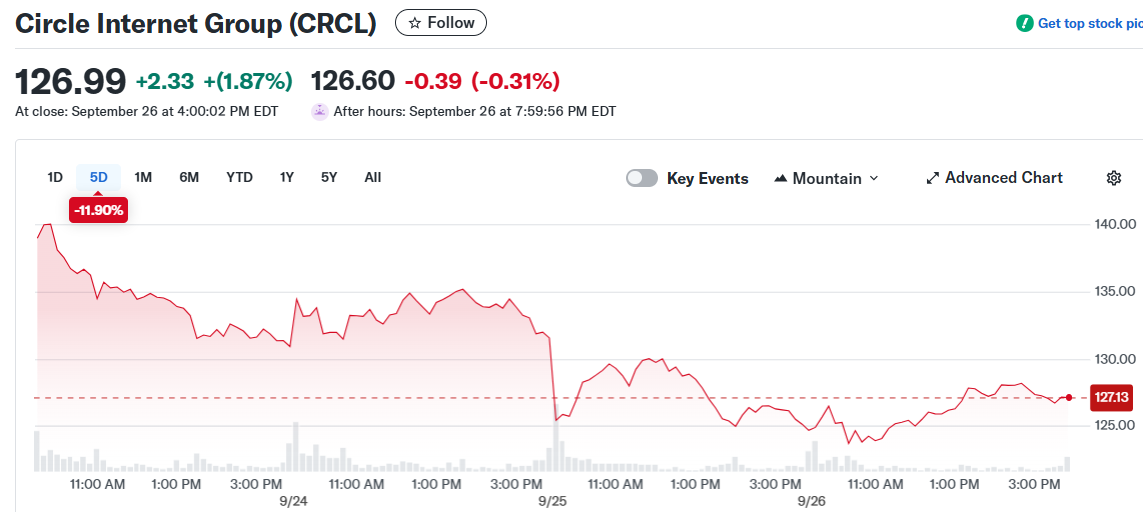TLDR
- Circle Internet Group (CRCL) stock dropped 11.9% this week as major UK banks launched a blockchain tokenization program instead of adopting stablecoins
- Bank of England Governor Andrew Bailey questioned the necessity of stablecoins, suggesting tokenization offers similar benefits without the risks
- UK banks are moving forward with tokenized deposits that provide blockchain benefits like faster transactions and better security
- Circle’s business model depends on USDC stablecoin adoption by traditional banks, which may be threatened by tokenization alternatives
- Despite the drop, analysts still value Circle at around $136.65 per share through DCF analysis, suggesting the stock may be slightly undervalued
Circle Internet Group shares fell 11.9% this week after major UK banks announced plans to develop tokenized deposits rather than adopt stablecoins. The move follows comments from Bank of England Governor Andrew Bailey questioning whether stablecoins are necessary when tokenization exists.

A consortium of Britain’s largest banks revealed Friday they will proceed with blockchain-based deposit tokens. This decision comes after Bailey encouraged financial institutions to explore tokenization over stablecoin creation.
The Bank of England governor specifically warned banks last summer about creating their own stablecoins. He questioned whether stablecoin alternatives are even needed given tokenization capabilities.
Bailey believes stablecoins could weaken the banking system by removing liquidity. His concerns focus on how stablecoins might impact traditional banking operations.
What Tokenization Offers Banks
Tokenization creates unique digital representations of assets like deposits and bonds on blockchain networks. These tokens can be stored in customers’ digital wallets while maintaining bank oversight.
The process offers many blockchain benefits including faster transactions and increased transparency. Banks also gain better security features without some stablecoin risks.
UK banks see tokenization as providing cryptocurrency advantages while keeping assets within traditional banking frameworks. This approach maintains regulatory compliance and customer protection.
US banks appear to be following similar paths despite clearer stablecoin regulations under President Trump’s policies. Major American financial institutions are also leaning toward tokenization over stablecoin adoption.
Circle’s Business Model Under Pressure
Circle has built its strategy around traditional finance adopting its USDC stablecoin. The company positioned USDC as the bridge between conventional banking and cryptocurrency markets.
The UK banking consortium’s decision suggests tokenization might limit USDC adoption. This threatens Circle’s core business model and growth projections.
Circle currently trades at 13.88 times sales, above the software industry average of 5.34 times. The company also trades at a premium to its peer group average of 12.33 times sales.
Despite recent volatility, Circle stock has gained 52.6% year-to-date. Analyst projections suggest the company’s free cash flow could reach $1.42 billion by 2029.
Discounted cash flow analysis values Circle at approximately $136.65 per share. This suggests the stock may be undervalued by about 7.1% at current prices.
Circle’s current free cash flow stands at $461 million with analysts expecting steady growth. The tokenization trend by major banks represents a key challenge to these growth assumptions.






